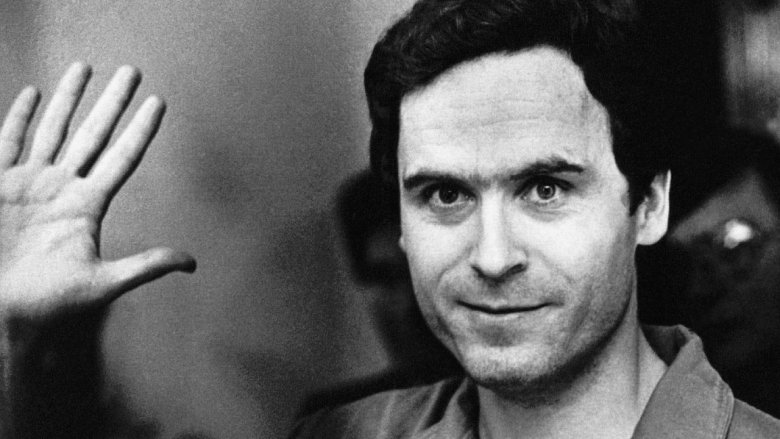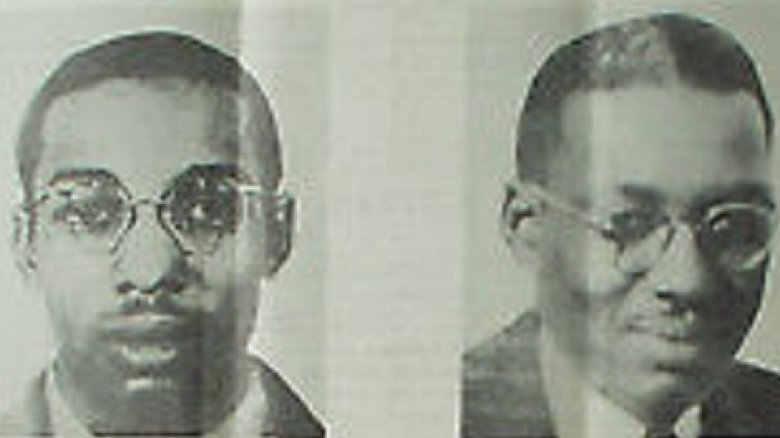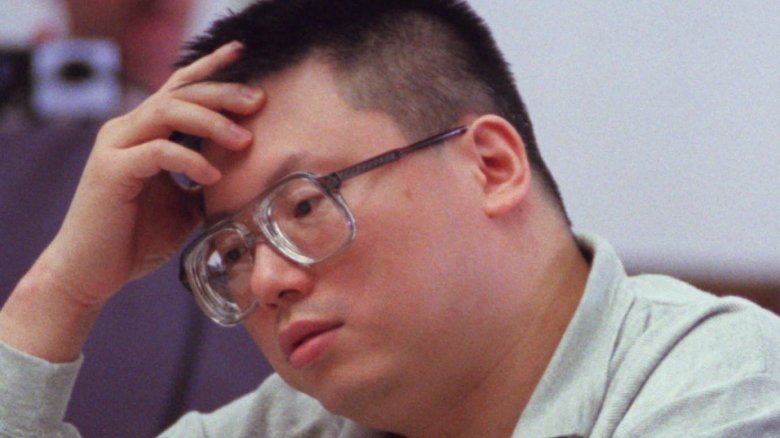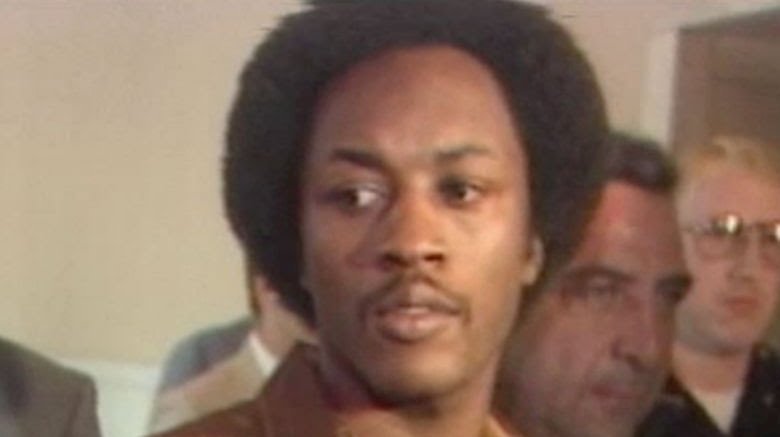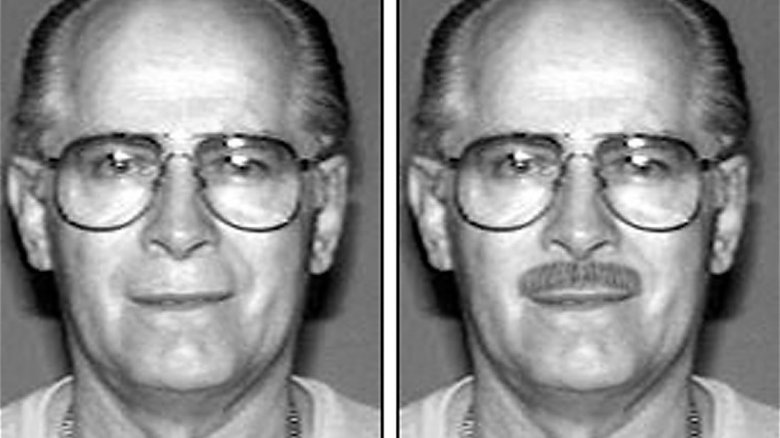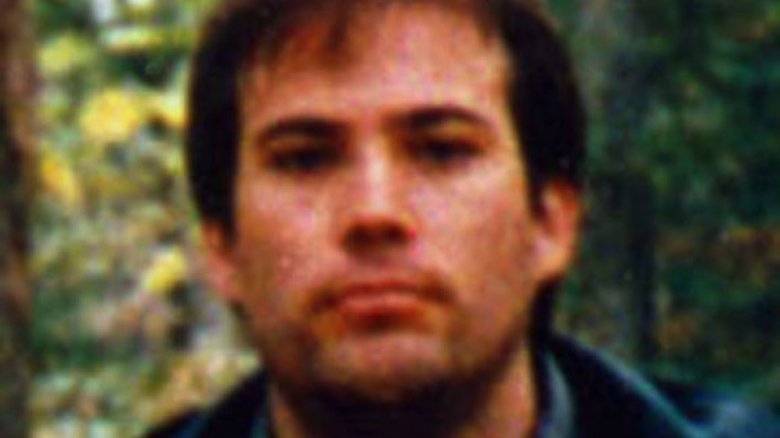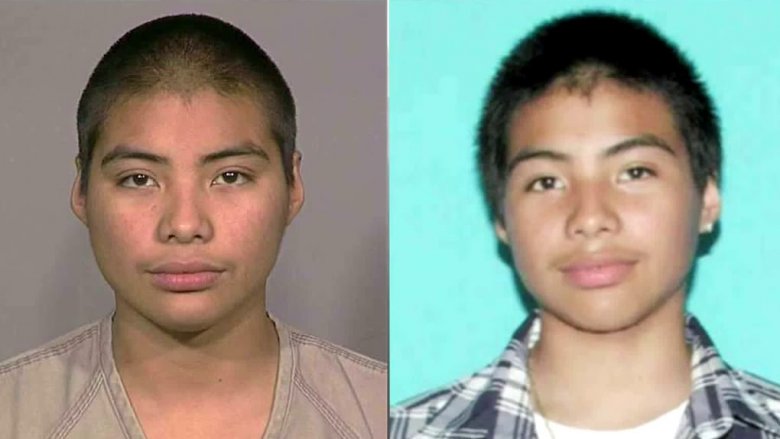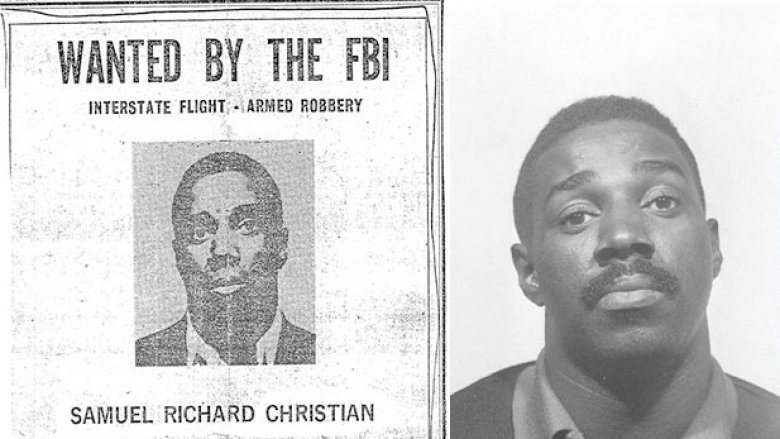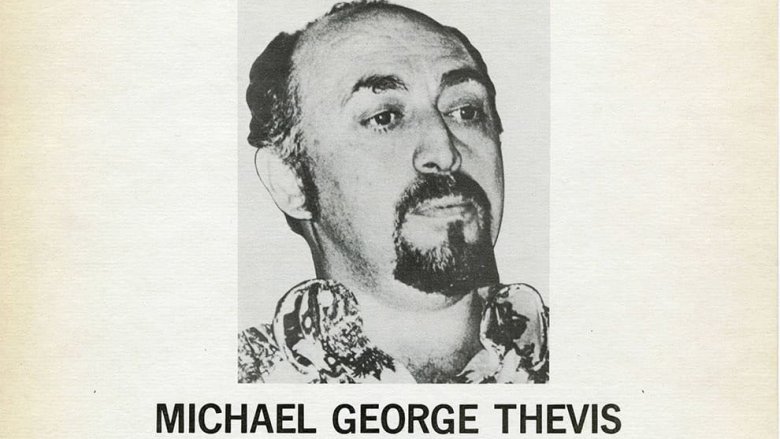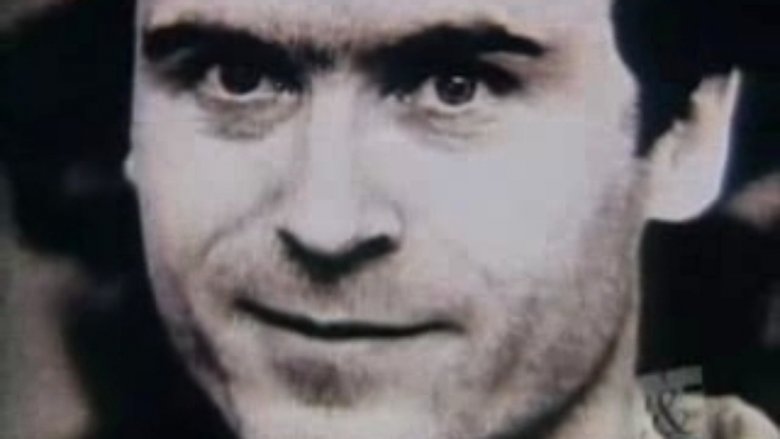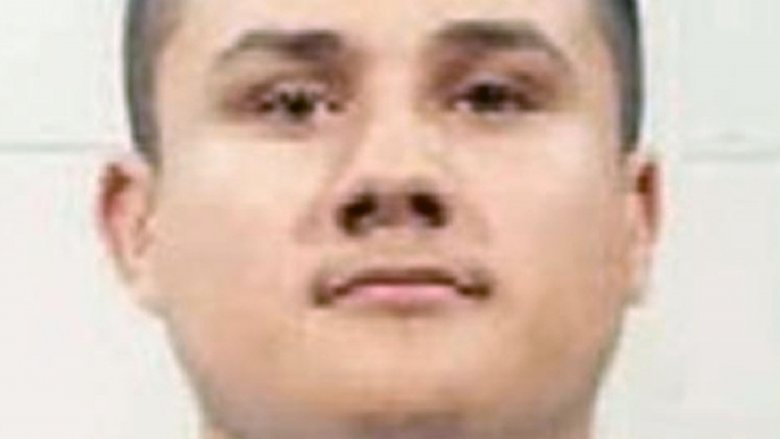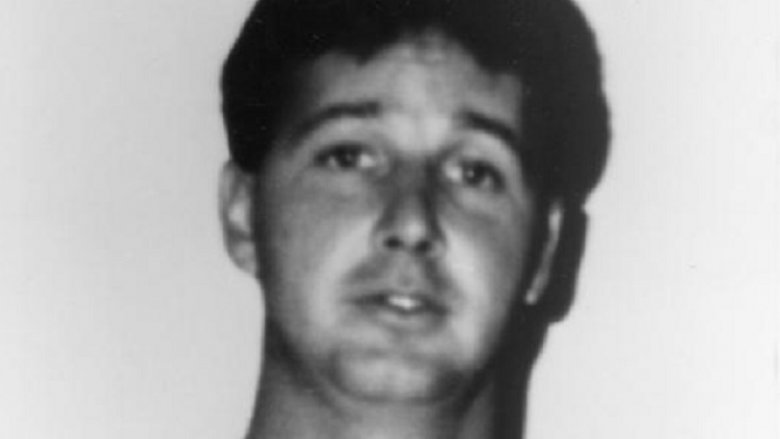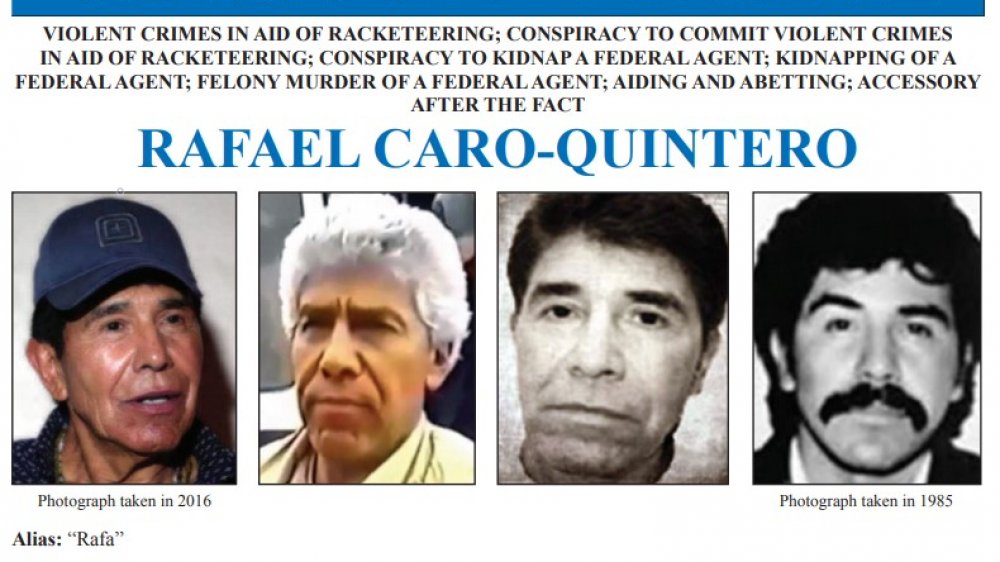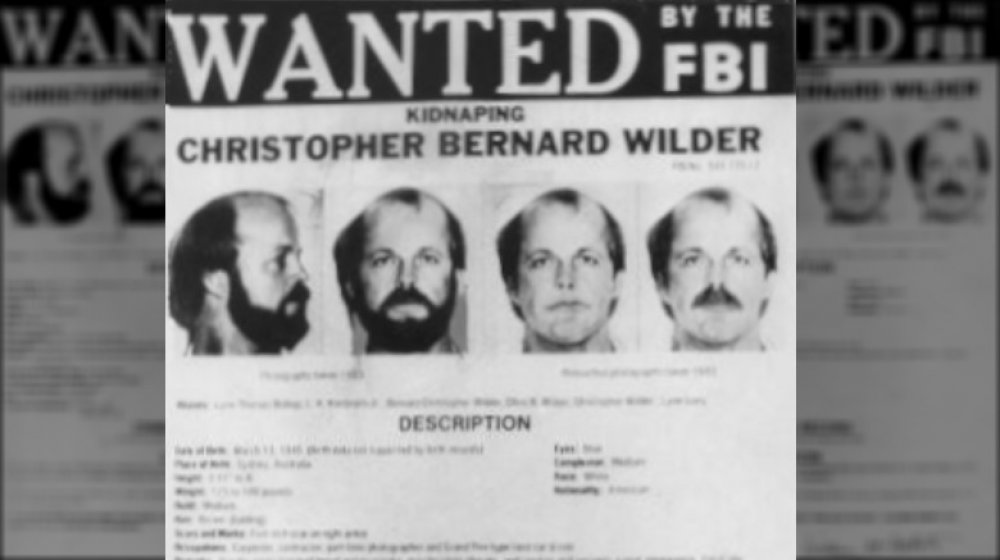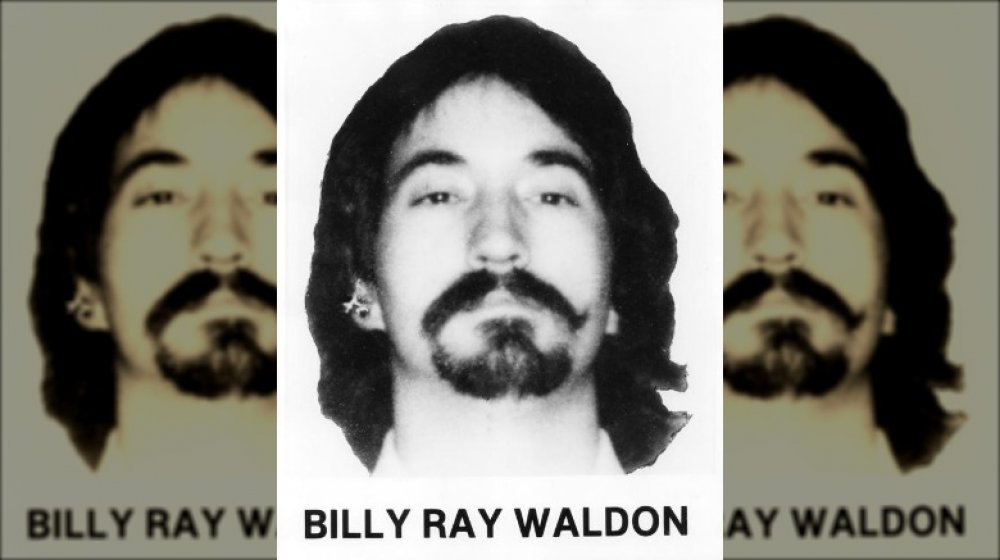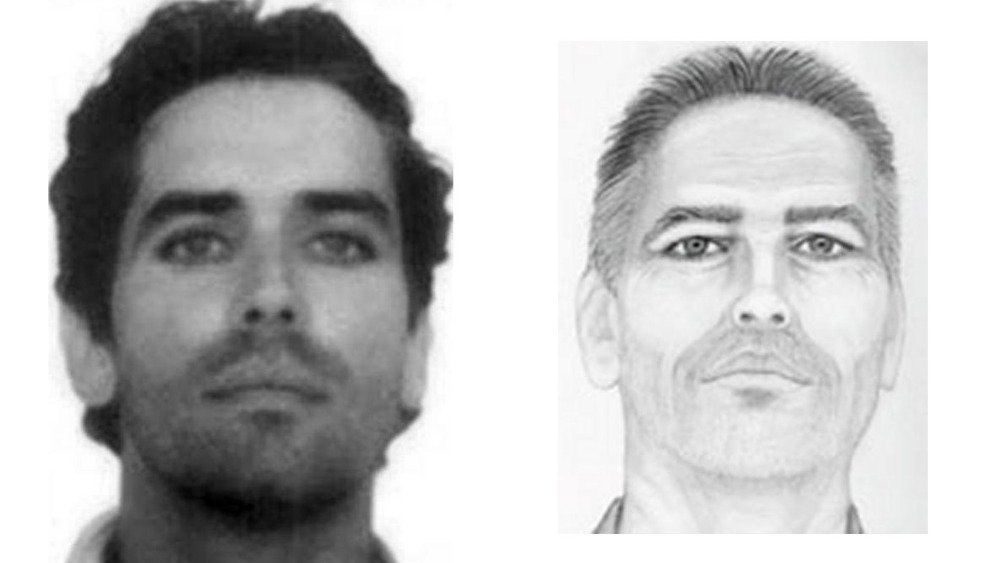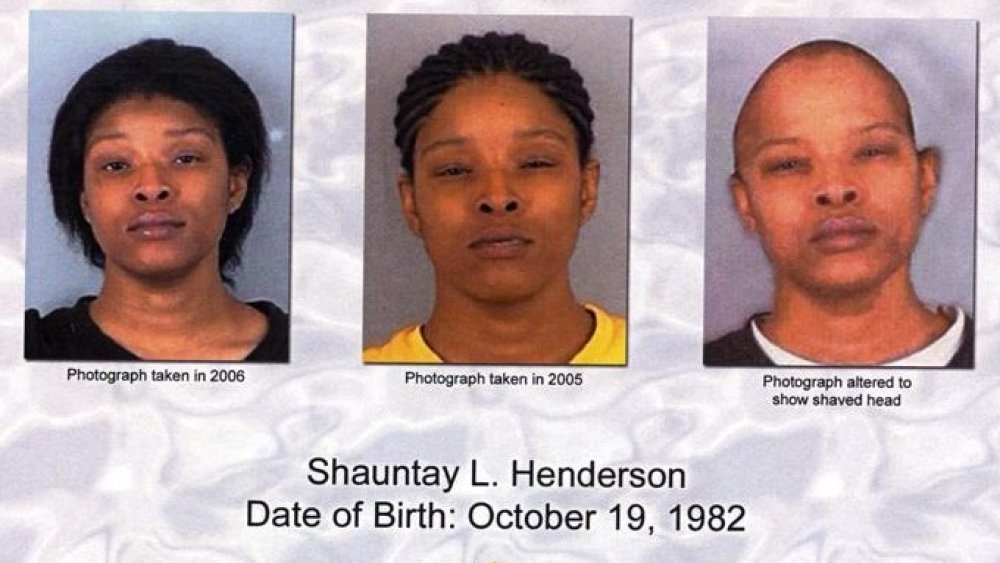The Most Dangerous Criminals To Ever Make The FBI's Most Wanted List
Since 1950, the Federal Bureau of Investigation has published an updated annual list of their "Most Wanted" fugitives, and — according to the FBI's website — it all began with a question by an intrepid reporter from the International News Service, the forerunner of today's United Press International (UPI). This reporter submitted to the FBI a request for a list of the names and descriptions of the "toughest guys" currently on the run from justice, and the FBI obliged, much to the reporter's delight. The info spread far and wide, and the Most Wanted list was born.
Since its inception, and as of this writing, 521 men and women have made the FBI's Most Wanted list (no children ... yet), and of them, a whopping 486 have been captured or located. You've got to be a pretty bad dude or dudette to make the list, and since you're reading this, you're probably curious as to just how bad the baddest of them were. Well, we're here to tell you: pretty bad, yo. Pretty freakin' bad.
Cold-blooded killer turned ghost
One of the first to make the FBI's illustrious list was James Eddie Diggs, who by all accounts was an upright, stand-up, otherwise normally vertical family man with a wife and two young sons. Roundabout 1949, neighbors say that the home became a not-so-happy one, with Diggs frequently engaging in the ol' "drink and shout" routine after coming home from work as a mechanic at a Navy base in Norfolk, Virginia. Authorities say that at about 7 in the morning on May 26 of that year, Diggs snapped, shooting and killing his wife and children before pulling a week-long disappearing act.
This turned out to be the warm-up for a much longer act, as Diggs temporarily resurfaced about a week later for an extremely brief period of time — that is to say, the time it took for him to get pulled over by a police officer, shoot said officer in the face, and "[take] to the woods." The woods must have taken to him as well because Diggs hasn't been seen since. Whatever caused him to get all shoot-y remains a mystery; he was eventually removed from the list in 1961 and is probably dead by now.
The ultimate horror show
There are vile, sadistic killers, and then there's Charles Ng, who along with his buddy Leonard Lake was arrested by the FBI for stealing guns in 1981. Ng went to prison for three years, but Lake made bail and then went into hiding at a remote cabin of the type you've seen in a million horror movies. The resemblance would grow even stronger after Ng's release three years later. He joined Lake at the cabin, and the two promptly constructed a rape/torture/murder chamber in which at least 12 human beings — including, unbelievably, two infants — would lose their lives.
The maniacs eluded the attention of authorities until they were observed stealing a bench vise (they'd broken their old one in the course of torturing one of their victims) from a lumberyard. Ng went on the run, while Lake was arrested, later committing suicide during a short break in his interrogation. Ng quickly made the FBI's list but was only caught when he attempted to shoot a security guard in a Calgary department store where he was, once again, trying to shoplift. At his 1998 trial, he was found guilty of 12 counts of murder — thanks largely to the fact that he and Lake had videotaped many of their crimes — and sent with all due haste to death row, where he remains today.
Spree killer extraordinaire
Alton Coleman was locked up for rape in the early '70s, and considering his predilections, he never should have been let out. A prison psychiatrist determined that he was "willing to have intercourse with any object, women, men, children, whatever," which is disturbing enough, but he preferred young girls, and he liked a healthy dose of violence with his abuse. He served only a few years and was acquitted of more rape charges in 1976 and 1980. This was likely a titanic failure of the justice system, though it's tough to say anyone could have predicted what happened next.
In 1983, as he was about to stand trial for rape yet again, he saddled up with his girlfriend Debra Brown to embark on a multi-state, two-month rape and murder spree that left eight people dead, including (surprise) several young girls. He was considered so dangerous that the FBI created an extra-special 11th slot on their Most Wanted list just for him; when he was finally apprehended, a few changes of clothes and a knife were literally the only things in his possession. Both Coleman and Brown received death sentences, although Brown's was eventually commuted because of her low IQ. As for Coleman, he was executed by lethal injection in 2002.
The (violently) departed
Infamous mob boss James "Whitey" Bulger is one of few to spend nearly as much time as an FBI informant as he did getting hunted by the Bureau. His career as a hood stretched back to the 1950s, and is much too involved to detail here. Suffice to say he was the inspiration for Jack Nicholson's character in The Departed and the film was probably a bit kind in its depiction of him. He began cooperating with the FBI in 1975, but such was his love for extortin' and killin' that he eventually gave up his double life, going on the run in 1994 rather than allowing himself to be arrested on suspicion of being involved in 19 (!) murders.
Bulger was a mainstay on the Most Wanted list until his capture in 2011 in Santa Monica, California, where he was living in a tiny apartment under an assumed name with hundreds of thousands of dollars in cash to keep him company. He was found guilty in 2013 of no fewer than 11 killings, for which he was slapped with two life sentences, plus five years for good measure. He was brutally murdered in prison in 2018, a crime the FBI resolved to investigate.
The bloody bomber of the South
We've all heard the phrase "mad bomber," but few fit the description quite like Eric Rudolph. He's best known as the guy behind the 1996 bombing of Atlanta's Centennial Olympic Park during the Summer Games (which killed two and injured over 100), but that was only the beginning of his bombing spree. He targeted an abortion clinic in an Atlanta suburb the next year, followed by a gay bar about a month later. In both of these instances, he also planted secondary devices intended to kill or maim responders to the scene — and in the instance of the abortion clinic bombing, it worked, injuring six reporters and police detectives.
Next, he set his sights on yet another women's clinic in Birmingham, Alabama — and while it was "successful" (the explosion killed the clinic's security guard), it also led to his eventual capture. He detonated the bomb by remote so he could watch the proceedings, and witnesses identified his pickup truck at the scene. His evil-ass mug was added to the Most Wanted list, but he managed to hide out until 2003, when a rookie cop happened to catch him digging in a dumpster outside a North Carolina grocery store. He pleaded guilty to all four bombings and was slapped with four life sentences with no possibility of parole. These days, his permanent residence is at the supermax prison in Florence, Colorado, alongside Ted Kaczynski, the infamous "Unabomber."
Still wanted after all these years
Update: Santiago Villalba Mederos was captured in Mexico in June 2020, according to the FBI.
If you're thinking that some of these guys should have been caught way sooner due to their presence on the FBI's list, here's your chance to put your eyes where your mouth is because this dude is still at large. Santiago Villalba Mederos was added to the list in 2017, and there's a $100,000 reward for information leading to his arrest. The guy is an extremely trigger-happy gang member who, in 2010, fired into a car just because one of its passengers was wearing the wrong color jacket. The victim (who had no ties to any gang) was seriously injured and his sister, the car's driver, was killed.
Just a couple weeks later, Mederos and his gang buddies were looting a car which they believed belonged to somebody who owed them money. A group of men confronted them, and that's when Mederos decided that a lethal escalation of the situation was in order. He fired randomly into the crowd, striking and killing a guy who was simply in the wrong place at the wrong time. He's been on the run ever since, and though the FBI believes he initially fled to Mexico, they also think he may have returned to the States by now. Take a good look at that picture. He's about 5'10", with the letter "S" tattooed on his left shoulder and the letter "E" on his right. If you spot him, you could score a sweet payday while helping put this scumbag behind bars.
The scourge of Cheesesteak Town
For their existence, pretty much every violent gang in Philadelphia can thank Samuel Christian, a notorious crook who founded Philly's Black Mafia in 1968. That bustling narcotics organization was responsible for at least 50 murders, with its offshoot (the Junior Black Mafia) tallying up a good 25 more. Christian himself drew heavy attention from authorities in the early '70s after personally blowing away a competitor in a 1972 nightclub shoot-out in which three others also died, as well as offing another competitor (Major Coxson, who once ran for mayor of Camden, New Jersey) in 1973. He capped off this run by attempting to gun down a cop in a Harlem record store in '74 just eight days after making the Most Wanted list, whereupon he was arrested and sentenced to 15 years to life.
This did little to curb his criminal ways, however. Upon his 1988 release he alternately beefed with and attempted to take over the JBM, but he somehow managed to elude serious trouble for the rest of his life. (The last mention of him in police blotters was a 2002 parole violation.) He died in a nursing home in 2016 just shy of his 77th birthday, an ignominious end for a man whose very name once had every criminal in Philly quaking in their shorts.
The Scarface of Sex
It may seem odd in an era in which smut can just randomly appear on your phone whether you want it to or not, but before the internet age, people — lots and lots of people — would leave their homes to go to adult cinemas or to shady "bookstores" to buy nudie magazines. Oftentimes, these "bookstores" would feature viewing machines, into which you could insert quarters to watch a 15-second loop of grainy, old-timey lovin'. Believe it or not, these "peep machines" had become a $2 billion annual business in the early '70s, and the vast majority of them were owned by one man — Michael Thevis, who would become known as the "Scarface of Sex."
As you might have guessed, he earned this moniker by killing the hell out of anyone he perceived as a threat to his empire, up to and including his best friend and loyal henchman Roger Underhill. He made the Most Wanted list after a 1978 prison escape (he'd been imprisoned for burning down a competitor's warehouse) and was arrested 16 days later after trying to withdraw a suspiciously large sum from a Connecticut bank. Put on trial for the murder of Underhill, he received a life sentence in 1979; the full extent of his murderin' ways became known when his memoirs were recovered from his cell after his 2013 death.
Killer good looks, emphasis on the killer
Perhaps the most notorious serial killer in American history, Ted Bundy was literally the guy your mama warned you about. Outwardly charming and personable, his main M.O. was to pretend to be disabled or otherwise in need of assistance (sometimes even employing fake casts and crutches), luring attractive female coeds to the vicinity of his 1968 VW Beetle. Then he'd knock them unconscious with a pipe, handcuff them, and cart them away to do unspeakable things. He would sometimes bring his deceased victims home to further defile their bodies and was even known to display their severed heads around his apartment like ghastly trophies.
His reign of terror began around 1974, and even though police had a pretty good description by the late '70s, he kept evading suspicion because he was just so darn good-looking and intelligent. Once he finally was caught, he escaped prison not once but twice. His first escape lasted only a week, but after his second (which landed him on the Most Wanted list), he was able to elude authorities for several months, during which he murdered six more people. Two of the six met their ends on the same night, as Bundy embarked on a Jason Voorhees-like spree at a Florida sorority house, attacking five women. He was finally caught not due to a helpful public, but a simple traffic violation. He got the death sentence and was executed in the electric chair in 1989.
California's super-deluxe failure
Joe Saenz, alias about eight other names, was an incredibly bad dude — and the fact that he's now in prison is due solely to the FBI, because the state of California completely failed to protect the public from him. He was imprisoned for violent gang activity but paroled in 1996. After ditching parole, he was returned to custody but somehow paroled again in 1998. Of course, he skipped out again, and that's when the murdering began in earnest. He was believed to have killed two rival gang members and, for some reason, the mother of his child, among others. In 2005, it was discovered that the warrant for his arrest had been inexplicably withdrawn. Believe it or not, it wouldn't be the last time something like this would happen.
The warrant was reinstated by investigators working the case, and Saenz was apprehended in Mexico on suspicion of four murders. But by the time he was returned to the U.S., his warrant had somehow been withdrawn yet again. Jailed for his most recent offense (which was simple drug possession), he was — wait for it — discharged from parole in 2012. Finally, the FBI stepped in to say "yeah, don't think so," and his old warrant was reinstated at their direct request. He was finally apprehended for good in late 2012, no thanks to the California Division of Adult Parole Operations, which had dropped the ball on his case every single time it had been in their hands.
One killer roomie
Gary Ray Bowles, also known as the I-95 Killer, is a guy you wouldn't want to meet in a dark alley, or anywhere else — especially if you happen to be gay. After kicking off his 1994 killing spree by beating his 59-year-old roommate to death, he began hanging out in gay bars, feigning interest in potential victims until he could get them alone. He used this M.O. to strangle, shotgun, and rob at least three more victims — and although he quickly became a person of interest to authorities investigating the crimes, Bowles was able to keep ahead of them by staying on the move.
He was featured on America's Most Wanted that summer, which resulted in his housemates calling him in. Incredibly, simply getting a tan and growing a mustache changed his appearance enough to convince the police they had the wrong guy, and he was released. Just a week after being added to the FBI's list, he was arrested for the murder of yet another roommate, at which point he quickly broke down and confessed to six killings in total. At trial, he was sentenced to death, but the sentence was overturned due to the presentation of "improper" evidence that Bowles was a homophobe and that many of his victims were gay. He was given a new penalty hearing, during which jurors presumably shook their heads in disbelief at the court's decision before sentencing him to death again.
The mastermind of evil
You know who this guy is: Osama Bin Laden, the piece of crap who founded al-Qaeda and was the mastermind behind the 9/11 attacks. But it wasn't that pivotal event in American history that landed him on the Most Wanted list; he'd already been a target of the FBI for over a decade by 2001 due to the activities of his followers. These included such events as the 1993 Mogadishu bombing, which killed 18 Americans; the other attack on the World Trade Center that same year, which killed six and injured over 1,000; the 1995 attempted assassination of Egyptian president Hosni Mubarak; the U.S. National Guard training center bombing in Riyadh later that year, which also killed six and injured hundreds; the 1996 bombing of a U.S. Air Force complex in Dhahran, Saudi Arabia, which killed 19 and injured over 100; and the twin bombings of U.S. embassies in Africa in 1998, which between them claimed the lives of 224 people.
The 9/11 attacks were simply the grand culmination of Bin Laden's "holy war" against the West, which had the effect of driving him into hiding for the rest of his life. That life came to an end on May 1, 2011, when U.S. forces stormed his hidey-hole in Abbottabad, Pakistan, and shot him dead. It was a fitting end for a man likely responsible for more deaths than all other Most Wanted fugitives combined, and who was basically America's boogeyman for over 20 years.
The aging killer of a DEA agent
If you can think of a crime, chances are pretty good that Rafael Caro-Quintero has either committed it or been involved in it. He was put on the FBI's Ten Most Wanted List in 1985, and the charges were long: violent crimes in aid of racketeering, conspiracy to commit violent crimes, conspiracy to kidnap a federal agent, felony murder of a federal agent ... you get the idea. There's so much there, in fact, that there's a $20 million reward listed on the poster as well.
The murdered federal agent is Enrique Camarena, a DEA agent who was kidnapped and killed while in Mexico in 1985. According to The Guardian, he was grabbed off the street while walking to a lunch date with his wife and was found a month later — he'd been subjected to some extreme torture before he'd been killed.
Here's the weird thing: Caro-Quintero was actually arrested and found guilty of ordering Camarena's death. He got a 40-year sentence and remained in prison until he was released in 2013. Why? It was "on administrative grounds." Of course, that didn't go over well, and guess what? He went back on the list. He might be underground, but his lawyers certainly know where he is — in May 2020, they filed for an injunction barring his arrest and extradition from Mexico to the US, saying that he "has no money, is too old to work, and has no pension."
The Beauty Queen Killer
Christopher Wilder had a thing for pretty ladies ... so much so that in order to meet them, he'd approach them (usually in shopping malls, per History), compliment them, and offer them a modeling job. He wasn't a talent scout.
He was, however, an Australian-born, Florida-based race car driver with a boatload of cash at his disposal, cash that fueled a month-long killing spree with, says the Miami Herald, an unknown number of victims. It is believed that his spree kicked off on February 26, 1984, with the kidnapping of Rosario Gonzales. Another young woman, Elizabeth Kenyon, disappeared a week later, and it was a detective on her case who honed in on Wilder. Wilder dropped off the radar and popped up on the FBI's Most Wanted List.
What followed was a nationwide manhunt, involving hundreds of federal agents. Sightings were reported, and authorities finally confronted him in Colebrook, a little New Hampshire town on the border with Vermont. Wilder — who had been holding a girl hostage and forcing her to help him lure victims into his car — ended the hunt when he was approached by a state trooper. He shot himself dead. Sadly, four of his victims were unaccounted for, and he took their final resting places to the grave with him ... along with the truth of what might have happened to the other missing girls he was suspected of killing.
Lawyer? I don't need no lawyer! I got this...
In 1986, Billy Ray Waldon earned himself the dubious honor of becoming the 399th person to get a spot on the FBI's Most Wanted List. His crimes? A rape, murder, shooting, and robbery spree that kicked off on October 10 in Oklahoma and continued through December and all the way into California.
His victim list is long (via The Oklahoman): a 28-year-old woman who survived a bullet ricocheting off her skull after a holdup, a 54-year-old woman who died after being shot four times, and a couple who also managed to survive — she was shot once in the neck, and he was shot in the face. Then, in San Diego, there was the murder of a 43-year-old woman as well as her 13-year-old daughter, who died trying to rescue her mother from their house ... which Waldon had set on fire.
Fortunately, Waldon was arrested and put on trial by 1991. According to the Los Angeles Times, he refused a lawyer, questioned himself while on the stand, and claimed that he had been the target of an FBI counterintelligence operation because of his Cherokee identity. (He referred to himself by the name of Nvwtohiyada Idehesdi Sequoyah.) Early the following year, he was found guilty and given the death penalty. That was in 1992. In 2019, The San Diego Union-Tribune noted that he was still waiting for his execution.
They could catch him ... but they couldn't keep him
Glen Stewart Godwin is a little different, as he made the FBI's Ten Most Wanted List after he'd already been arrested, convicted, and sent to jail.
According to Business Insider, it all started in 1980. That's when he and his roommate decided to rob a local drug runner ... only, Godwin ended up stabbing him 26 times with a butcher knife. The roommate called him "the most dangerous man I have ever met," so it's no surprise that he ended up with a conviction. After one escape attempt, he was sent to Folsom State Prison ... where he escaped after just five months. How? If you've ever seen The Shawshank Redemption, that's pretty much how he did it: He cut through security bars and escaped down a storm drain and then hopped on an inflatable raft and headed to Mexico.
There, he was arrested for cocaine trafficking, was sent to jail, killed a member of a Mexican drug cartel, and escaped yet again. Mexican authorities were mum on just what had happened, but Godwin was added to the FBI's list in 1996 — 16 years after his initial crime. He stayed there for 20 years, until he was removed, as he "no longer fit Top Ten criteria." He was never recaptured.
The killer who was super-proud of her gang ties
There haven't been too many women added to the FBI's Ten Most Wanted List, says Rolling Stone. One of the most dangerous was Shauntay Henderson, and as fate would have it, her time on the list was short-lived — she was arrested the same day she was added: March 31, 2007.
Henderson's arrest came in connection with the killing of a 21-year-old man who was shot while sitting in his pickup truck, but that wasn't the only thing she was wanted for. At the time, authorities believed she had been involved in at least five other murders and had participated in as many as 50 shootings. According to Newsweek, Henderson was extremely proud of her ties to Kansas City's 12th Street Gang — so proud that she regularly bragged about it on her MySpace page. She was credited with orchestrating a wave of violence that led to shootings and murders across the city, partially in retaliation for the deaths of her sisters in drive-by shootings.
After her arrest, she spoke with reporters from The Pitch KC and said that the accusations were completely false — right down to the MySpace page. According to The Kansas City Star, she was convicted of manslaughter and given probation, but in 2012, the same judge revoked her probation and sentenced her to seven years for felony possession of a firearm, which would run concurrently with the ten years she was to serve for manslaughter now that her probation had been revoked.
